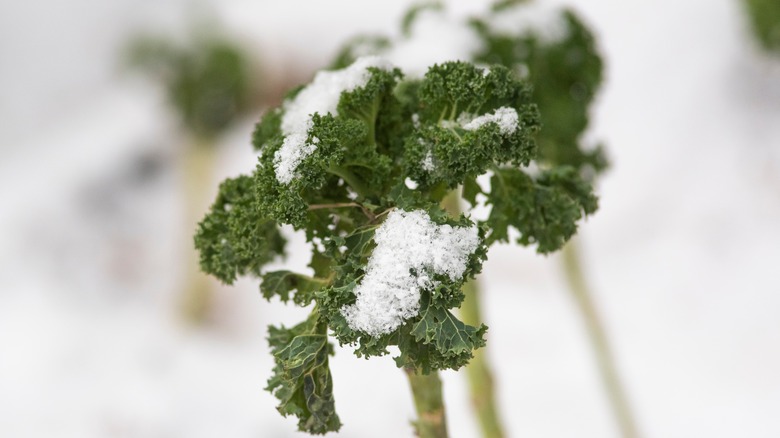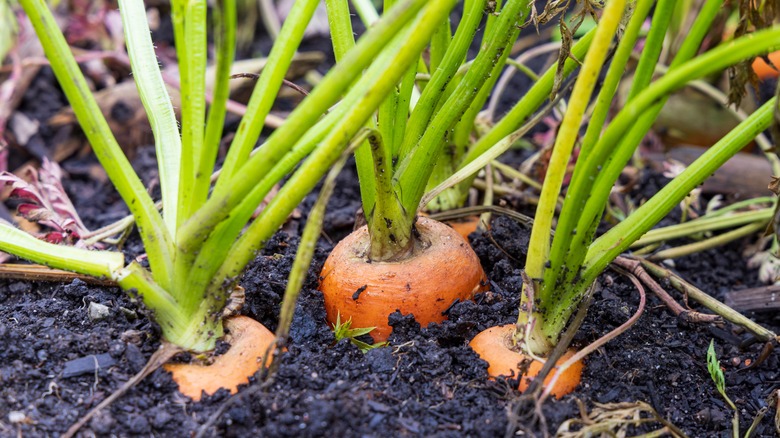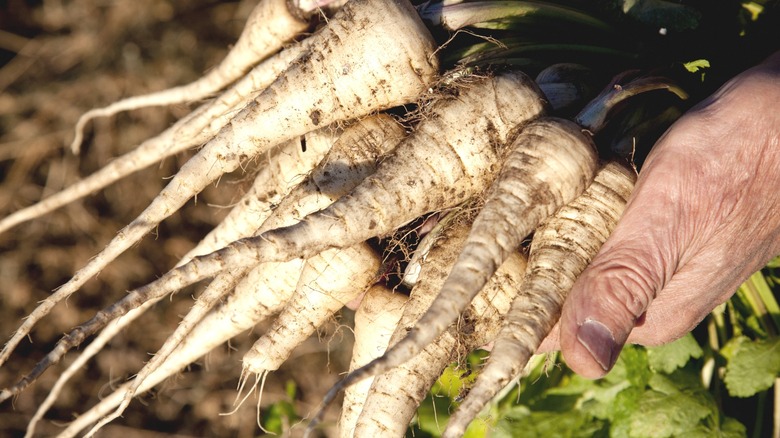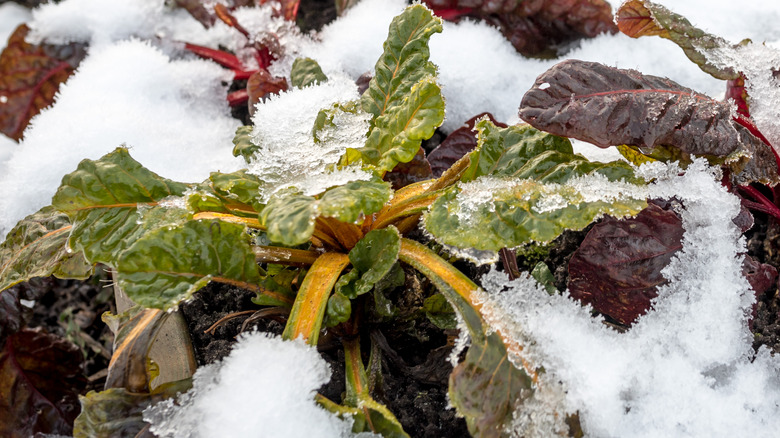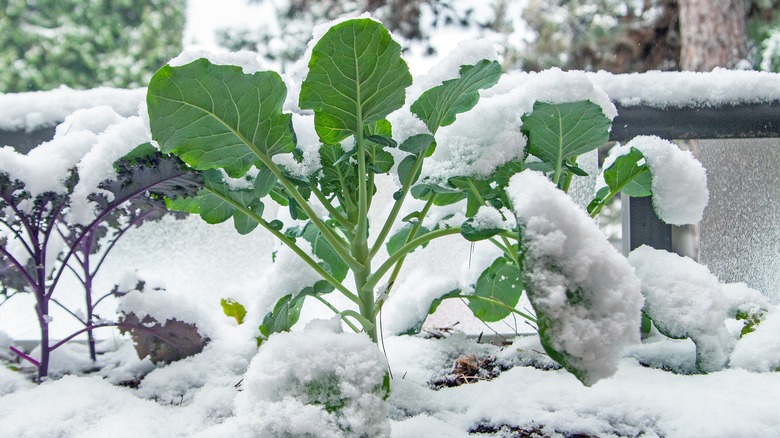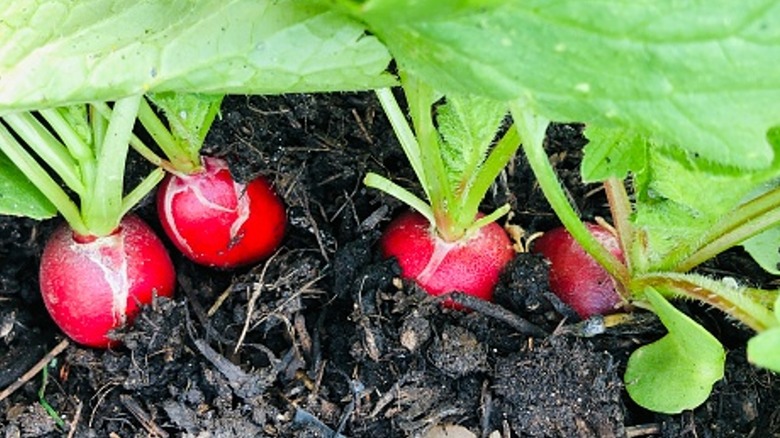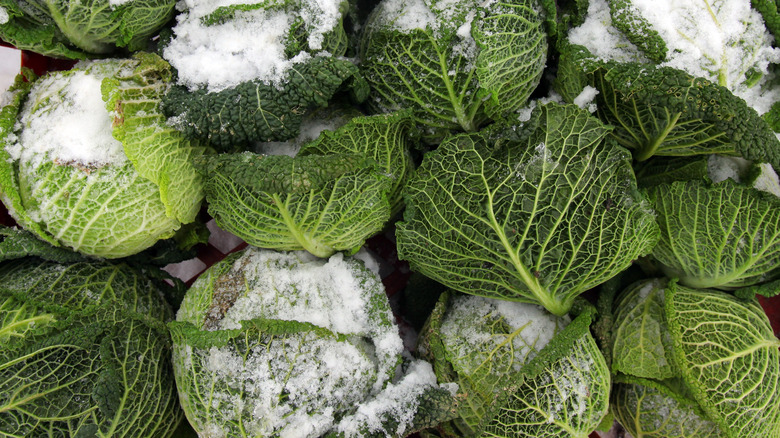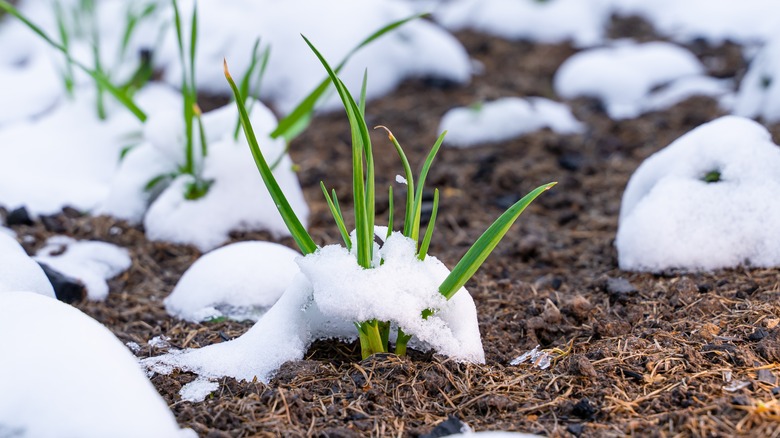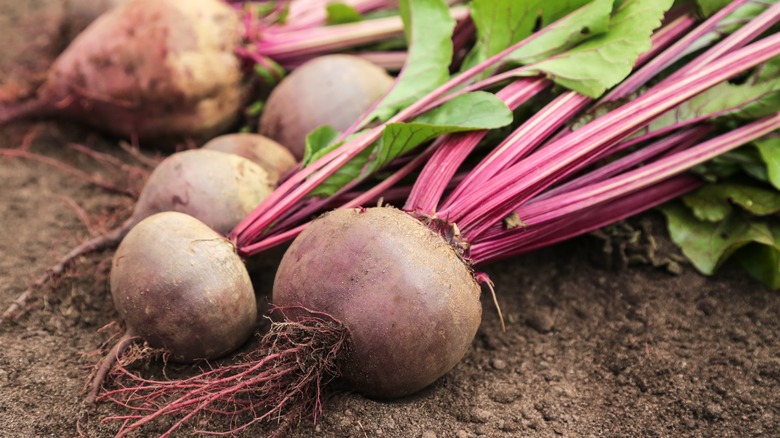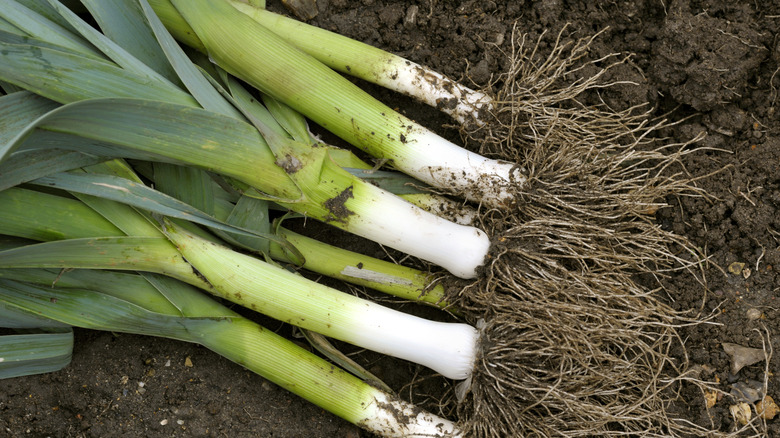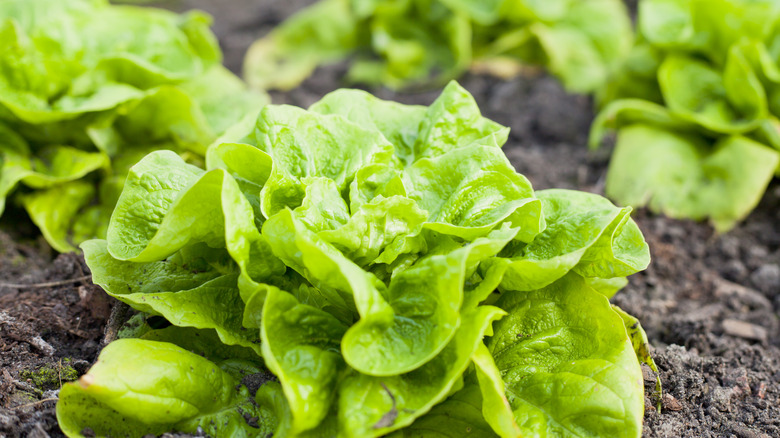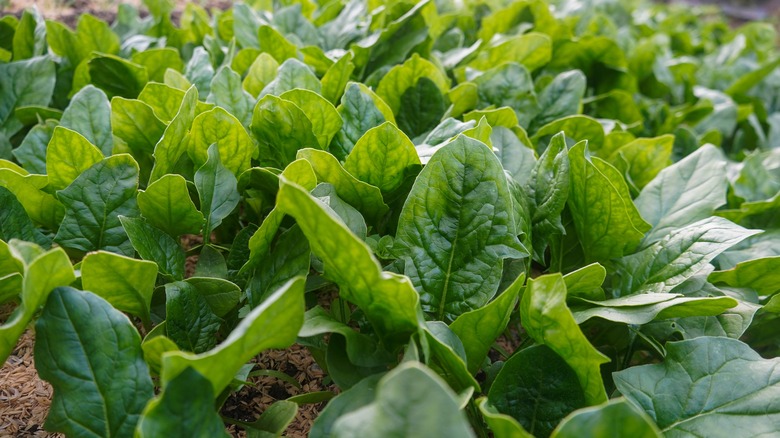12 Vegetables That Will Grow Year Round In The Garden (& Which Are Easiest)
We may receive a commission on purchases made from links.
There's nothing better than growing your own vegetables from home, especially when you can enjoy fresh produce in every season, even during the chilly winter months. With a bit of planning and the right techniques, you can grow a variety of vegetables year-round. There are about 12 vegetables that are suitable to grow all year long: kale, carrots, parsnips, Swiss chard, broccoli, radishes, cabbage, garlic, beets, leeks, lettuce, and spinach. Each of these vegetables brings unique flavors and endless variety to your table, and many are hardy enough to withstand the colder temperatures, making them perfect for winter gardening.
However, growing vegetables over the winter does require a little bit of extra preparation. First and foremost, you'll want to choose the right varieties that are known for their cold tolerance. Some vegetables, like garlic and spinach, are known for their ability to thrive in chilly weather. An investment in season extenders like cold frames, row covers, frost cloth, or even a greenhouse will allow your crops to last longer into the season and protect them from frost and harsh conditions. You'll also want to make sure your soil is prepared for the winter. Adding some compost and making sure the soil has good drainage will help your winter vegetables succeed.
As you're setting up your winter garden, consider the microclimates in your garden area. Some areas may be warmer and more sheltered than others, and they could provide an ideal spot for winter planting. Lastly, keep a good eye on your crops as they grow over winter. Even the most cold-hardy plants still need protection from severe weather and pests.
Kale
During summer, it's prone to insect infestations — but during winter, kale is arguably the easiest crop to grow. It is the hardiest of greens and withstands frost, making it an excellent choice for year-round gardening. Kale can thrive in USDA zone 7 and above, withstanding temperatures as low as 25 degrees Fahrenheit and growing in the Southwest, Pacific Northwest, and Southeast regions. Certain varieties of kale, like Russian and Tuscan kale, should handle the winter months just fine. Because it doesn't love the heat, plant them in spring or fall and harvest them all year long. Just be sure to avoid common mistakes when growing kale.
Carrots
Carrots are another easy crop to grow year-round. They are superior when it comes to handling cold winter climates and can grow in USDA zones 3 through 10. So, if you live in areas like Minnesota and Illinois, depending on your climate, this might be the winter crop for you. You can sow them in spring and again in late summer for a continuous warm weather harvest. Just make sure you're thinning your carrot plants for bigger results. Then, heavily mulch them during late fall so they will continue to grow slowly all winter long. And if you prefer mini carrots, try 'Paris Market' or 'Little Finger' varieties in your winter garden.
Parnsips
Parsnips are a tasty vegetable you won't want to leave out of your winter gardens — or your creamy winter soups. They are especially known for their ability to sweeten after a frost, making them a perfect candidate and treat during the chilly winter months. Some varieties can tolerate the cold better than others, so make sure you choose the best variety to grow in your area. Cold-tolerant parsnips can thrive in USDA hardiness zones 2 through 9. With a layer of mulch to protect them, parsnips can even tolerate temperatures as low as 0 degrees Fahrenheit.
Swiss Chard
The beautifully colored Swiss chard, a cousin of spinach and beets, is one vegetable not to leave off your year-round growing list. This crop is one you can continuously harvest from all year once it begins producing leaves. Harvesting out the bigger leaves encourages it to continue producing more foliage. It can survive in USDA zone 8, in states like Arizona, Louisiana, and North Carolina, where winter temperatures generally stay above 15 degrees Fahrenheit. With proper insulation, the right mulch, and coverage, you might be able to grow it over winter in Zone 7.
Broccoli
Broccoli is exceptionally cold-hardy, nutrient-dense, and an excellent choice to include in your winter garden. While broccoli tolerates and prefers cooler temperatures and light frosts, a hard freeze could still quite easily take it out. So, if you're in USDA zones 6 through 10, you'll want to choose the right variety of broccoli that can withstand 20-degree temperatures. Winter broccoli will also take longer to grow because of the shorter daylight hours. Make sure you give it adequate protection from harsh frosts using mulch, row covers, and cloths. Also, you'll want to account for the space they need to grow.
Radishes
Winter radishes are totally a thing, and you won't want to exclude these fast-growing vegetables from your year-round garden. Several varieties of radishes are meant for cold weather conditions, and they come in a wide range of colors, sizes, and flavors. These root vegetables can be harvested in as little as 3 to 4 weeks in the spring, making them perfect for continuous planting and quick yields. They will thrive in well-draining soil in USDA hardiness zones 2-10. Plan to protect them with row covers or the MCombo Wooden Garden Portable Greenhouse Cold Frame, and plant them in fertile soil in full to partial sun.
Cabbage
Some varieties of cabbage have better cold tolerance than others, making those varieties a top choice for growing cabbage over winter USDA zones 2 through 9. But you'll want to plan accordingly, as certain varieties can withstand 20-degree freezing temperatures. Additionally, you'll need to provide a thick layer of straw or mulch, row covers, and cloths on the freezing cold nights, and be sure to protect any young sprouts with new leaves. You'll also want to make sure to plant this vegetable in a sunny location as it needs as much sun as possible during the short daylight winter months.
Garlic
One vegetable that actually needs to grow over winter is garlic. This bulbous vegetable is typically planted in fall so that it can grow during winter and form each of its cloves. Ideally, you'll plant it in the fall, sometime in October, that way it has a chance to set it's roots before the first frosts. Then, you'll want to heavily mulch your crop to protect the bulbs from freezing. Garlic will grow in USDA hardiness zones 3 through 8 and are ideally ready to harvest in late spring and early summer.
Beets
Another vegetable whose flavor improves over winter is beets. These already yummy vegetables can get even sweeter when you leave them in the ground through winter. However, beets don't tolerate extremely cold temperatures very well, meaning below 25 degrees Fahrenheit, with crops doing better in places with milder winters. You can add mulch to help with insulation for the colder weather, but it won't do much in the face of hard freezes. Beets will grow well during winter in USDA hardiness zone 9 and above and need to be planted during late fall so you can harvest them through winter.
Leeks
If there's one vegetable that genuinely doesn't mind temperatures below freezing, it's leeks. Generally grown as biennials, these hardy vegetables can survive frosts below 15 degrees Fahrenheit with minimal protection. The key to keeping this vegetable surviving during the chilly winter months is mulching the base of the leeks to keep them from freezing. There are many varieties of leeks you can choose from that will not only make it through the winter but also provide you with a delicious addition to many meals. Choose the suitable variety that's tolerant for your region (USDA zones 3 through 11), and you can successfully grow this vegetable all year long.
Lettuce
If you're still craving fresh salads through the fall and into winter, you'll want to grow lettuce in your winter garden. Growing lettuce in containers may be an ideal solution so you can bring them indoors or to sheltered areas during extreme cold weather conditions. Or you can use a variety of protection methods like Garden Tunnel Green Houses to keep your lettuce growing year round. Some lettuce varieties don't require much sunlight and are even frost-hardy, withstanding temperatures in the low 20s Fahrenheit. You can grow this winter-loving vegetable in USDA hardiness zones 4 through 9.
Spinach
With the right cold-hardy varieties and protection, you can grow spinach over winter. Spinach loves the colder temperatures and finds anything between 40 and 70 degrees Fahrenheit ideal. But many varieties, like Bloomsdale and Verdil in particular, can withstand temperatures as low as 15 degrees Fahrenheit. Different varieties will tolerate different temperatures and hardiness zones, with the best USDA hardiness zones being 5 and 6. Spinach does require some protection, like mulching or using a cold frame to shield them from the harshest winter conditions. As long as you choose suitable cold-tolerant spinach varieties that provide adequate protection, you can enjoy a bountiful winter harvest.

